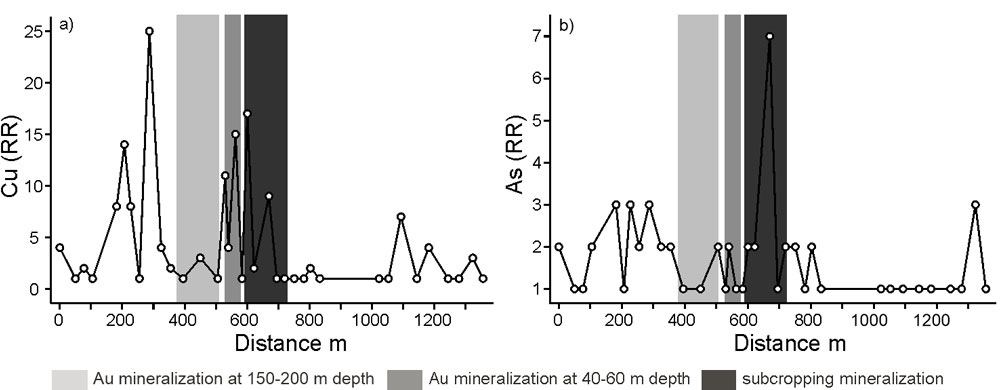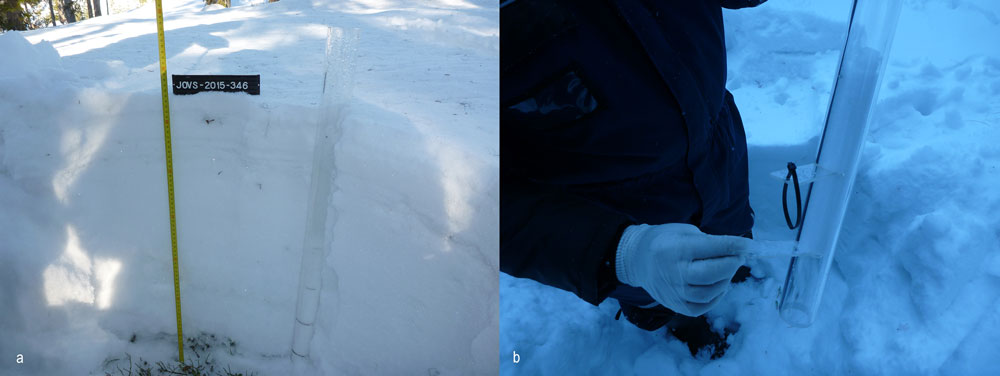Science Blog: Snow: an alternative sampling material for mineral exploration
Environmental issues currently have an important role in mineral exploration, and environmentally friendly exploration methods and materials have therefore been investigated. The project “Ultra low-impact exploration methods in the subarctic” was carried out during 2013–2015. The main goal of this project was to examine the suitability of “ultra-light” geochemical methods for mineral exploration in northern regions. As a part of this project, snow was tested as one sampling material for mineral exploration purposes.
Using snow as sampling material is not a new idea. It has been applied in environmental studies for decades, and was even tested for mineral exploration purposes in the 1970s. At that time, analytical results were only available for a few elements (base metals), even though they were at the ppb level. Today’s modern analytical techniques (for example, single-collector high-resolution inductively coupled plasma mass spectrometry, SC-HR-ICP-MS, and high-resolution gas chromatography coupled with mass spectrometry, HRGC/MS) provide a wide range of elemental concentrations or hydrocarbon compounds at the ppb or even ppt (parts per trillion) level. However, we have found no reports on the analysis of snow with these methods for mineral exploration purposes. Therefore, two questions were addressed in this study: Are there detectable concentrations of elements or hydrocarbons in snow, and if so, can they be related to underlying mineralisation? It is known that gasses coming from depths transport elements and metal ions into the overburden and upwards into the snow pack, and these elements can provide information on buried mineralisation. In the same way, such gasses transport hydrocarbons.
Snow sampling was carried out in two consecutive years, from March to April in 2014 and 2015, over the Juomasuo Au–Co deposit (Kuusamo), the Saivel Cu target (Sodankylä) and the Kyörtesselkä P-REE occurrence (Savukoski). The results were somewhat promising: the mineralisations were detected with both SC-HR-ICP-MS and HRGC/MS, but the results were not repeatable in all of the cases. The SC-HR-ICP-MS results were more promising (Fig. 1), but were only available in the second sampling year. The results are presented in the article “Snow in mineral exploration – Examples and practices in glaciated terrain” (Taivalkoski et al. 2019).

In snow, the concentrations of elements and hydrocarbons are very low, being at the ppt level. Thus, the sampling itself requires care, since the samples can be easily contaminated. Because of this, it is even recommended to approach the sampling sites on skies or snowshoes, and if a snowmobile is used, to leave it further away from the sampling site. The sampling itself is very easy, involving a modified acrylic tube, and samples are light to carry. To ensure that metal ions and hydrocarbons have enough time to form clear signals in snow, sampling is usually conducted in spring, and it is thus possible to enjoy the sunny spring weather with shimmering white snow and blue sky while collecting samples. After collection, samples are kept frozen until analysis.

Based on the results of this study, some improvements were identified to enhance the results. The development of this method using snow samples for mineral exploration purposes will be continued in the Horizon 2020-funded project “New exploration technologies – NEXT”.
Reference:
Taivalkoski, A., Sarala, P., Lahaye, Y., Lukkari, S. & Sutherland, D. 2019. Snow in mineral exploration – Examples and practices in glaciated terrain. Journal of Geochemical Exploration. Available at: https://doi.org/10.1016/j.gexplo.2019.01.006
Text: Anne Taivalkoski
Ms Anne Taivalkoski is a geologist in the Mineral Economy Solutions Unit. She has worked at GTK since April 2012 specializing in till geochemistry and indicator minerals. Her research interests are focused on the development of surface geochemical exploration techniques. Currently, she is the project manager of the project “Mineral systems and material characterization methods”.
